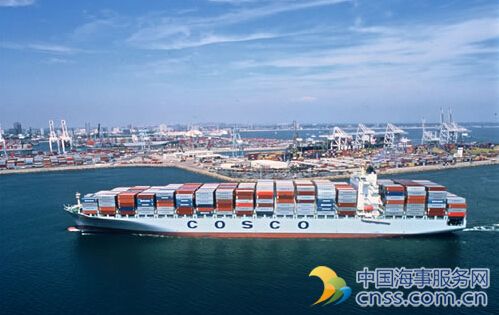Mining stocks rally postpones industry revamp

Investors in mining stocks could face years of weak returns as a rally in share and industrial metals prices eases pressure on companies to restructure and curb oversupply.
The mining sector is known for over-investment in boom times and crashes when demand weakens as economies slow, but many companies say they have learnt lessons and are making efforts to reduce debt and control spending.
Mining stocks have more than doubled since multi-year lows touched in January, a rebound analysts link to cheap cash from Chinese financial stimulus rather than a fundamental increase in demand for industrial materials.
The rally has given companies with fragile balance sheets a reprieve from the bankruptcies and mergers analysts say are needed to adapt to lower demand. This could extend the stagnation as production at weaker firms limps along, adding to inventories.
“We see significant excess capacity in the (mining) industry which needs to be reduced before the fundamentals will improve, and this could easily take three years. We are therefore taking a cautious view toward the industry,” said Lewis Grant, a senior portfolio manager at Hermes Investment Management.
He said he was particularly wary of smaller firms and drawn toward miners with exposure to gold, such as Randgold Resources, as gold is seen as safe-haven investment.
Commodity markets boomed shortly after the millennium, driven by demand from China, the world’s biggest raw materials market. They started to falter early in 2011, led by copper after it became clear Chinese consumption was not as great as previously thought.
In January this year, at the height of concerns about Chinese demand and weak balance sheets, the market capitalization of mining firms fell to less than $300 billion, a 75 percent fall from $1.1 trillion in March 2011. It has since risen to $480 billion, according to the MSCI global mining index.
Mining companies, including Glencore, BHP Billiton, Rio Tinto and Anglo American, have all announced asset sales and said they are focused on lowering costs.
But the sales are taking time and in some cases, industrial sources say mining assets have been taken off the market.
Glencore has put on hold a copper mine sale, people familiar with the matter said.
A company spokesman last week declined to comment, but Glencore has repeatedly said its policy is to only sell if it can achieve the right price.
“If we had January-like conditions for six months, it would have gone a long way to cleaning up excess supply in commodities like iron ore, but China stimulus means we’re back to where we started,” Richard Knights, analyst at investment bank Liberum Capital, said.
A surplus of iron ore, used to make steel for buildings and infrastructure, is expected to persist for the foreseeable future because the market is flooded and yet firms are still producing more, analysts say.
As the impact of Chinese stimulus has waned, they have also become bearish about copper, used as a conductor for electricity and as a building material.
“For a new commodity bull rally to happen, you need to see further capitulation and to see further tightening of the belts for some of these companies,” David Neuhauser, managing director at U.S. hedge fund Livermore Partners, said.
URGENCY GONE
Livermore says it owns Glencore shares and has sold short Anglo American.
Glencore, along with Anglo American, faces the biggest debt burden of the major miners, analysts say, and they have mooted Anglo American as a potential takeover target.
Firms with less debt, notably Rio Tinto, which could seek to expand, are also wary of paying too much for other companies.
Rio Tinto spent $38 billion on Alcan in 2007 at the top of the commodities boom in a deal viewed by analysts as the most calamitous the sector has seen.
As the first mining company to take a major hit from a slowing market, Rio was forced to reform and its new CEO Jean-Sebastien Jacques, who took over at the start of July, said this month that maintaining a strong balance sheet was a priority in such a capital-intensive sector.
The firm has outlined a moderate capital expenditure plan of less than $4 billion this year, $5 billion for next year and $5.5 for 2018, compared with $17.4 billion in 2012 when adding to production was all the rage.
Fund managers say the new restraint is in tune with shareholder demands for value for money.
“With the fresh memory of the prolonged bust in mind, most investors will put pressure on the miners not to repeat the same mistakes and overbuild,” said David Finger, an analyst at Allianz Global Investors.
Glencore, which stands out from the pack because of a big commodity trading portfolio that can generate profits even in falling markets, has gone further.
Its CEO Ivan Glasenberg, who has criticized his rivals for adding volumes to oversupplied markets, says growth needed to be redefined as cash flow per share, rather than production.
While acknowledging a shift in attitude from mining companies, the investment community is skeptical about the extent to which that can be achieved.
“They are builders and engineers. They like digging massive holes in the ground. That psychology is difficult to overcome,” one industry insider said on condition of anonymity.
Source: (Additional reporting by John Tilak in Toronto and by Vikram Subhedar and Zandi Shabalala in London; editing by Anna Willard)
HEADLINES
- Do shipping markets want Biden or Trump for the win?
- All 18 crew safe after fire on Japanese-owned tanker off Singapore
- Singapore launching $44m co-investment initiative for maritime tech start-ups
- Cosco debuts Global Shipping Industry Chain Cooperation Initiative
- US warns of more shipping sanctions
- China continues seaport consolidation as Dalian offer goes unconditional